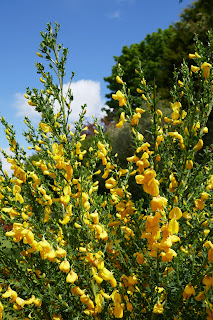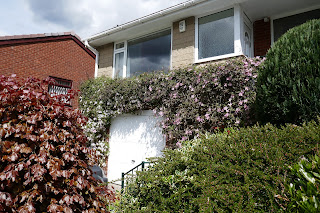 The aquilegia or columbine is one of my favourite flowers. It is probably because it is not too fussy where it is planted and will thrive in a wide variety of situations. Consequently, it does well in the Pennine garden and they even grow in the meagre soil by the side of the large Scots Pine and close by the Solomon's Seal. The aquilegia also come in a huge variety of colours, as the photos below illustrate, all of which were taken in the past few days.
The aquilegia or columbine is one of my favourite flowers. It is probably because it is not too fussy where it is planted and will thrive in a wide variety of situations. Consequently, it does well in the Pennine garden and they even grow in the meagre soil by the side of the large Scots Pine and close by the Solomon's Seal. The aquilegia also come in a huge variety of colours, as the photos below illustrate, all of which were taken in the past few days.
The aquilegia tends to be prolific at self seeding and can be relied upon to come back each year. It is another very good reason to find a home in your garden for some of these pretty and distinctive little plants. Although if you prefer tighter control of your borders you can remove the seed heads. Top tip: if you have a problem patch in your garden but want a lovely splash of late spring colour then give the aquilegia a try.
The folklore associated with the columbine flower is plentiful and it is often said to represent a symbol of love and romance. The meaning behind this flower means that it is supposedly an ideal gift when you want to surprise someone who is your love or your partner. The columbine flower is going to send a strong message of love and affection, no matter how small or unimportant it might seem. Those who understand the columbine flower symbolism are going to be more than happy to receive such a beautiful gift.
However, in some cultures, the columbine flower represents foolishness and the court jester. The reason why it is linked with this this characteristic or person is probably because of the appearance of the flower itself. This flower is shaped like the jester’s hat and this is one of the reasons behind this interesting connection.










